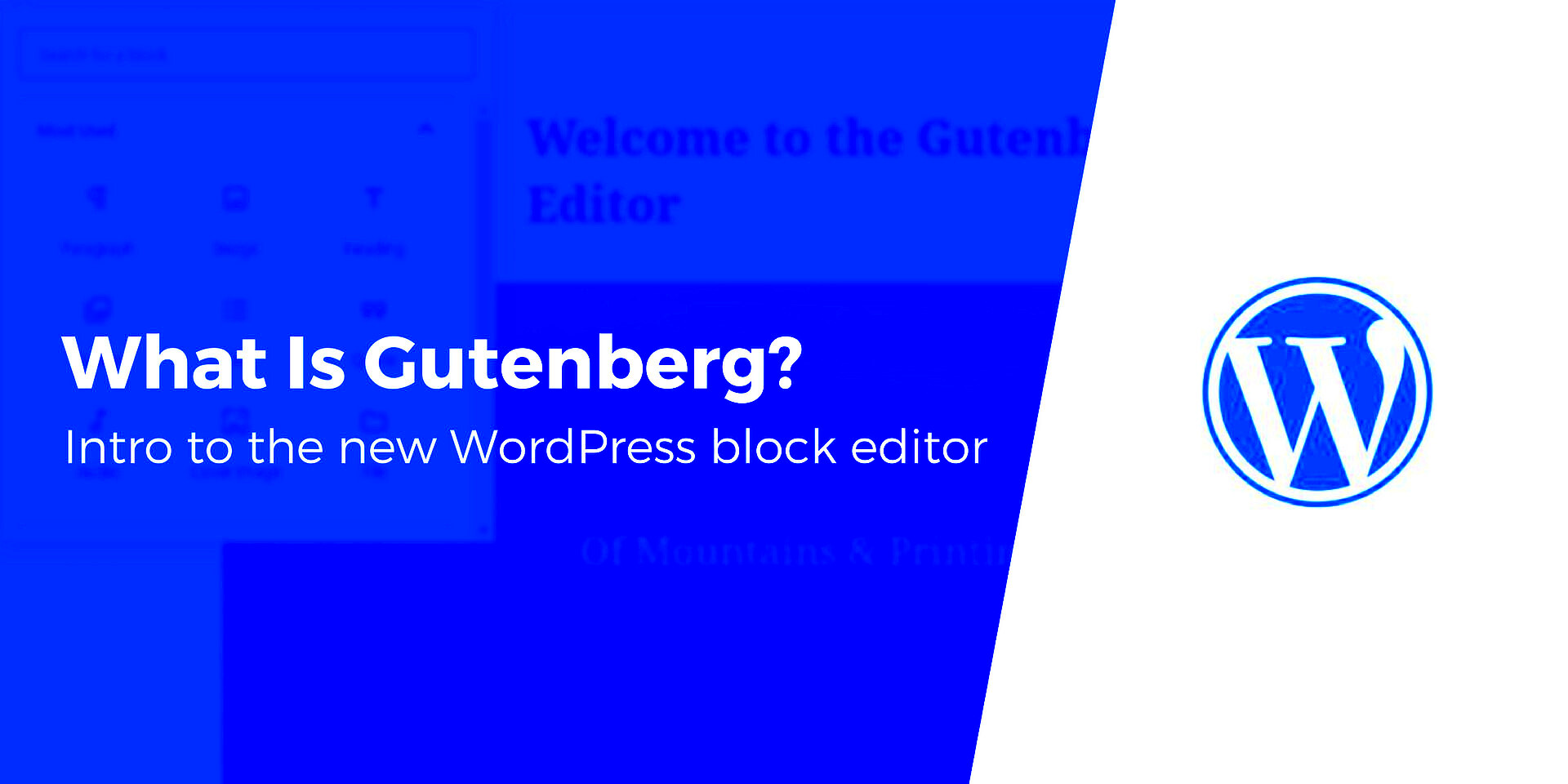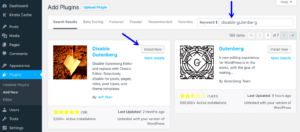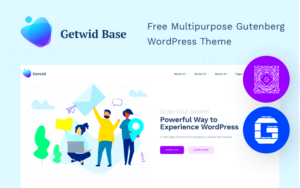Gutenberg is a powerful block-based editor introduced in WordPress 5.0, named after Johannes Gutenberg, the inventor of the printing press. This revolutionary editing tool aims to simplify the content creation process, making it more visually appealing and user-friendly. Instead of the traditional text editor,
This new approach revolutionizes how content looks and feels, giving creators the freedom to design pages with ease. Whether you’re a seasoned WordPress user or just starting, Gutenberg enhances your ability to create beautiful, responsive content without needing extensive coding knowledge.
Key Features of Gutenberg
Gutenberg comes packed with a plethora of features that streamline the content creation process. Let’s explore some of the standout functionalities:
- Block-Based Editing: Everything in Gutenberg is a block, whether it’s a paragraph, image, video, or quote. This modular approach allows for easy rearrangement and customization.
- Reusable Blocks: Create blocks once and reuse them across different posts or pages, making content management efficient and consistent.
- Wide Variety of Blocks: From text and images to buttons and embedded content, there’s a block for nearly every type of content you might want to include.
- Drag-and-Drop Functionality: Moving blocks around is a breeze! Just drag them to your desired position without hassle.
- Customizable Designs: Each block comes with unique styling options, allowing you to change colors, fonts, and layout according to your preference.
Here’s a quick comparison table illustrating some of the traditional editor vs. Gutenberg features:
| Feature | Traditional Editor | Gutenberg Editor |
|---|---|---|
| Content Approach | Linear Text | Block-Based |
| Customization | Limited Formatting | Extensive Styling |
| User Experience | Traditional | Intuitive Drag-and-Drop |
With these features, Gutenberg not only empowers content creators but also enhances the overall user experience of WordPress, making it a fantastic tool for anyone looking to build stunning websites.
The Benefits of Using Gutenberg
Gutenberg is revolutionizing the way we create content on WordPress. This block-based editor provides a refreshing and user-friendly approach to building pages and posts. Let’s explore some of the benefits that make Gutenberg a game-changer for WordPress users:
- Intuitive Block System: Gutenberg uses a block system that allows you to add different types of content easily. Whether you want to include text, images, galleries, or buttons, you can just insert the needed block without any hassle.
- Real-Time Editing: With Gutenberg, you can see changes in real-time. This means that as you add and modify content, you get an immediate visual feedback, reducing the need to switch back and forth between the editor and the preview.
- Improved Layout Control: The block editor enhances your ability to create complex layouts without needing to touch a single line of code. You can arrange, group, and reorder blocks as per your requirements.
- Reusable Blocks: One of the standout features is the ability to save blocks for reuse. If you create a layout or design that you love, you can save it as a reusable block and insert it into other posts easily!
- Accessibility and Collaboration: Gutenberg prioritizes accessibility, making it easier for everyone, including those with disabilities, to create and edit content. Plus, the collaborative features invite teamwork among multiple users.
Overall, with the block editor’s flexibility and simplicity, Gutenberg opens up a world of creativity for both novice and experienced WordPress users.
How to Get Started with Gutenberg
Ready to dive into the world of Gutenberg? Getting started is a breeze, and you don’t need to be a tech whiz to enjoy what this modern editor has to offer. Here’s a step-by-step guide to help you set the ball rolling:
- Update WordPress: Ensure you have the latest version of WordPress. Gutenberg comes pre-installed with WordPress 5.0 and later, so keeping your WordPress updated is crucial.
- Access the Editor: To start using Gutenberg, go to the Posts or Pages section in your WordPress dashboard and click on “Add New.” You will be greeted by the Gutenberg editor!
- Familiarize Yourself with Blocks: Take some time exploring blocks. Click the “+” icon to see a list of available blocks. Try adding different types like paragraphs, images, and buttons to get the feel of how it works.
- Experiment with Layouts: Drag and drop blocks to rearrange them. Use the sidebar to adjust settings—like colors, alignment, and spacing—to create a layout that matches your vision.
- Save and Publish: Once you’re satisfied with your content, click the “Publish” button. You can also save it as a draft to revisit later.
And there you have it! With these simple steps, you’re all set to harness the power of Gutenberg for your WordPress content creation. Enjoy the creative process!
Customizing the Gutenberg Experience
When it comes to making your content creation more efficient and tailored to your needs, customizing the Gutenberg experience is a game-changer. There are a myriad of ways you can tweak the Gutenberg editor, allowing you to create a unique workflow that suits your style.
One of the most effective ways to customize your experience is through plugins. There are plenty of plugins available that can enhance the Gutenberg editor by adding new blocks and features. For instance:
- Stackable: Adds a variety of customizable blocks to make your pages more visually appealing.
- CoBlocks: Offers a suite of blocks specifically designed for layouts and styling.
- Atomic Blocks: A collection of useful sections and blocks for more dynamic design.
Another way to personalize your Gutenberg experience is by choosing a theme that fully supports it. Some themes are built specifically with Gutenberg in mind, providing you with more layout options and greater flexibility. Look for themes that emphasize compatibility with Gutenberg, ensuring that you can take full advantage of its features.
Don’t forget about user settings! Within the Gutenberg editor, you’ll find options to adjust how it appears and behaves. You can toggle between fullscreen mode, adjust icon sizes, and even rearrange your toolbar for quick access to frequently used tools. This not only makes your editing smoother, but it also helps you maintain focus on your writing.
Lastly, remember that practice makes perfect. The more you use Gutenberg, the more you’ll uncover tips and tricks that can enhance your experience. So jump in and start customizing – your content deserves it!
Gutenberg vs. Classic Editor
When deciding between Gutenberg and the Classic Editor for WordPress, it’s vital to understand how these two options differ. Both serve the primary purpose of content creation but do so in remarkably different ways.
The Classic Editor is reminiscent of traditional text editors, offering a straightforward, streamlined interface. It consists of a single edit box where you can type and format your content using a toolbar at the top. For users who prefer a simpler experience or are accustomed to older versions of WordPress, the Classic Editor can be more comfortable. Here’s a quick breakdown:
| Feature | Classic Editor | Gutenberg |
|---|---|---|
| Interface | Single edit box, limited visual layout options | Block-based editor with a focus on visual content organization |
| Flexibility | Less flexible in layout | Highly customizable using blocks and plugins |
| Learning Curve | Minimal, straightforward | Moderate, particularly for new users |
| Future Updates | Less focus as WordPress progresses | Regularly updated with new features and blocks |
Gutenberg, on the other hand, introduces a block-based approach to content creation. Each piece of content (be it text, image, or video) is added as a separate block, which provides much more flexibility and customization. This not only allows for more complex layouts but also makes collaboration easier, as different blocks can be edited independently. However, the learning curve can be steeper for those who are used to the Classic Editor.
Ultimately, the choice between Gutenberg and the Classic Editor boils down to personal preference and the specific needs of your website. If you want a more flexible, dynamic editing experience, Gutenberg is the way to go. If simplicity and tradition are what you seek, the Classic Editor will serve you well, at least for now!
Common Issues and Troubleshooting Tips
Using Gutenberg as your primary editing tool in WordPress can be a breeze, but like any software, it comes with its set of challenges. Let’s dive into some common issues you might encounter and how to tackle them effectively.
1. Block Incompatibility
One of the most frequent issues users face is block incompatibility. Sometimes, third-party blocks may not behave as expected. Here’s what you can do:
- Update Plugins: Ensure that all your plugins are up to date, as developers often release fixes for compatibility issues.
- Clear Cache: If you’re using a caching plugin, clear the cache to see changes take effect.
2. Slow Performance
If you notice that the Gutenberg editor is lagging, don’t panic!
- Check Hosting: Make sure your hosting service is adequate for your site’s needs.
- Limit Plugins: Too many plugins can slow down your site. Deactivate any that are unnecessary.
3. Block Missing Styles
Sometimes, blocks may appear without the expected styles. This can often be fixed by:
- Inspecting Theme Compatibility: Ensure your theme supports Gutenberg fully.
- Revisiting Custom Styles: Check if you’ve overridden any default styles that may affect the blocks.
Always remember to check the WordPress support forums. There’s a thriving community ready to help you troubleshoot your Gutenberg issues!
Future of Gutenberg in WordPress
Gutenberg has already transformed the way we create content on WordPress, but what’s next for this innovative block-based editor? Let’s explore the potential future of Gutenberg and how it could shape your web experience.
1. Enhanced User Experience
One of Gutenberg’s main goals is to offer a smoother and more intuitive user experience. Future updates may focus on:
- Improved Speed and Performance: Expect optimizations that speed up loading times and responsiveness.
- More Customization Options: Themes and blocks are likely to see enhancements, allowing for greater personalization.
2. Integration of AI and Automation
Artificial Intelligence is evolving, and its integration into Gutenberg could lead to:
- Content Suggestions: Imagine an AI tool suggesting content improvements or block placements based on user behavior!
- Automated Styling: Technologies might auto-adjust styles to fit your preferences or branding better.
3. Accessibility Improvements
As the web becomes more accessible, Gutenberg is committed to following suit. Future iterations might include:
- Enhanced Keyboard Shortcuts: Making it easier for all users to navigate.
- Screen Reader Compatibility: Ensuring that screen readers can effectively interpret blocks and content formats.
In summary, the future of Gutenberg in WordPress looks promising, aimed at enhancing usability, integration with smart technologies, and bolstering accessibility. It’s an exciting time to be a WordPress user!
Conclusion
In summary, Gutenberg represents a significant evolution in the WordPress editing experience, shifting from a traditional approach to a flexible, block-based system. This allows users to create more dynamic layouts and content without needing to delve into code.
Here are some key takeaways regarding Gutenberg:
- Block-Based Editing: Gutenberg utilizes a block system, enabling users to add different types of content – such as paragraphs, images, and galleries – as independent units.
- Enhanced Customization: With a multitude of blocks available, including those for videos, quotes, and buttons, users can easily customize their content with a few clicks.
- Reusable Blocks: Users can save any block configuration as a reusable block, making it efficient to maintain consistency across different pages and posts.
- Improved User Interface: The intuitive interface of Gutenberg helps streamline the writing process, allowing both new and experienced users to navigate effortlessly.
- Future-Ready: The continuous development and updates to Gutenberg indicate a commitment to enhancing the WordPress experience, ensuring it remains relevant in a rapidly evolving digital landscape.
The adoption of Gutenberg is not just a trend for WordPress; it’s a stepping stone toward an improved, user-friendly content management system that promotes creativity and accessibility for users of all skill levels.



